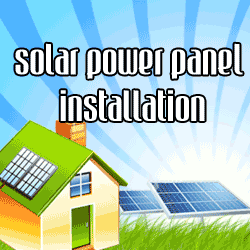

Cutting back on energy use is an admirable goal, but it’s difficult to not use air conditioning in humid summer heat or to keep blinds drawn (blocking your view) – on sunny spring days and all for a very minimal affect on actual energy costs.
Going green is an important consideration for homeowners (according to the Professional Awning Manufacturers Association, that’s important to 75% of homeowners) – but there are so many other maintenance demands on home budgets that going green needs to be a little bit easier. That’s the advantage of retractable awnings; they’re an easy first step towards efficiency:
• Don’t require a hefty financial investment, remodeling time, or difficulty
• Are an attractive enhancement to a home
• Have simple installation, low maintenance, and long lifetime
The largest expense in a home or business is controlling the temperature, so basic energy sustainability projects begin with maintaining home or business temperatures efficiently. Almost half of the heat that builds up in a home or business comes from sunlight. You may think that using blinds and shades to block a lot of sunlight is enough to block the heat energy, but according to Louisiana-based Claiborne Electric Cooperative, blinds only block the light from the sun. Once the energy reaches the window, the heat enters the room regardless of light, so the blinds don’t lower real air conditioning use.
Retractable awnings actually block solar energy from reaching the window, so it never enters the house. That’s a much more effective way of controlling air conditioning use; in fact, retractable awnings can cut the heat buildup in a room between 65% and 77%, according to the US Department of Energy.
So what effect does cutting down the solar heat in a room have on energy bills? In broad terms, it cuts air conditioning use around 25% and saves $100 on annual electric bills. The Professional Awning Manufacturers Association (PAMA) commissioned a study covering twelve major cities across the United States, factoring in the window orientation (west, south, east, or equal), whether the awning was installed year-round or only in Summer, the type of glass (normal or solar-reflective), and how long the Summer seasons are.
The effect of awnings varies widely depending on where most of the windows face, the region, and local energy costs. Sunnier homes – with western-facing windows or in long sunny seasons – showed a marked improvement, though every home cut cooling energy use:
• Sacramento and Seattle by over 60%
• Minneapolis and Boston around 33%
• Washington, DC and Houston around 15%
The actual dollar amount that translates to can equal even more than the percentage sounds; for example, Phoenix homes cut air conditioning use by 25% by using awnings but realized savings totaling almost $250.
One significant finding in the PAMA study: the benefits of using an awning are only in the summer. Year-round awnings increase heating expenses, and that can actually raise annual bills. For example, houses in Atlanta with east-facing windows saved a moderate $50 per summer on electric bills – but lost $7 over the entire year. In Boston, the decline in cooling energy usage had a minor affect on air conditioning expenses ($1), but cost $65 because of increased heating expenses.
That’s why true energy efficiency comes through installing a retractable awning.
While air conditioning expenses are a significant amount of electricity usage, heating expenses account for almost half of all energy used in a home. Any efficiency solution that improves air conditioning. Retractable awnings do that: they can remain extended throughout the entire summer season, for the maximum reduction in air conditioning expenses. As fall and winter set in, they can be retracted, so solar heat enters and naturally warms the house, keeping heating expenses down. By staying open permanently, fixed awnings cut sunlight in winter months, significantly increase heating costs, and cancel out any summer utility bill savings.
In the Northeast, where energy prices are a big concern, the New Hampshire utilities system recommends integrating retractable awnings with your landscaping to increase energy efficiency. Other features – easy care, easy use, long lifetime (over 25 years, instead of about 5 years), and diverse solution dyed acrylic fabric selections – make retractable awnings an appealing energy efficiency option. The reason for retractable awnings increasing popularity in America – and their immense popularity in Europe – is because they provide a simple, relatively inexpensive, and attractive method to control energy use.
About the Author:
Retractable Awnings offers quality awnings and patio covers, which are both reliable and easy to use .http://www.retractableawnings.com
Article Source: ArticlesBase.com - Finding Sustainability With Energy-efficient Retractable Awnings





